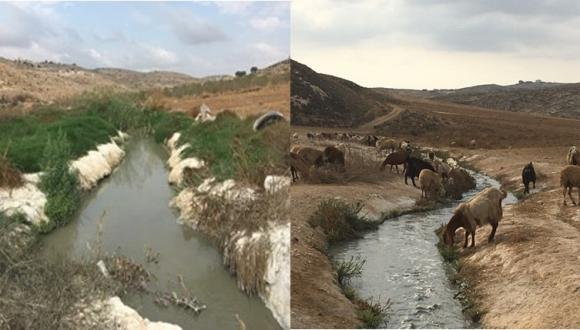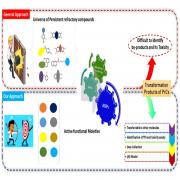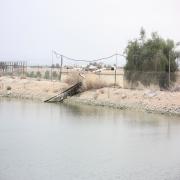Investigating the Presence and Fate of Chromium Contamination in the Transboundary Hebron Stream
In collaboration with Dr. Clive Lipchin, The Arava Institute
In collaboration with Dr. Clive Lipchin, The Arava Institute
The heavy metal chromium is stable at several valence states. The predominant state found in nature, trivalent chromium Cr(III), is an essential micronutrient, but the second most stable valence state, hexavalent chromium Cr(VI), is highly genotoxic and carcinogenic. Redox reactions that lead to Cr(III)-Cr(VI) interconversions are common, however, the favored reaction is a reduction of Cr(VI) to Cr(III) due to the greater reactivity of Cr (VI). The leather industry commonly uses trivalent chromium salts to tan animal hides, and oxidation of Cr(III) during this process or in the resulting wastewater could lead to the formation of Cr(VI) and introduction of both Cr(III) and Cr(VI) into the environment if tannery effluent is discharged without treatment or chromium removal. Further oxidation of Cr(III) to Cr(VI) by oxidizing agents present in the natural environment may occur.
The Hebron stream is a transboundary ephemeral stream in Israel and the Palestinian territories that originates near the city of Hebron in the West Bank. The stream is highly polluted and receives year-round inputs of untreated sewage from Hebron city and contaminated effluents from the city’s industrial zone, including discharge from the tanning sector that contains significant levels of chromium. Previous studies conducted on the Hebron stream watershed have detected chromium in the waters and sediments of the stream, but have not attempted to characterize the valence state of this chromium or to explain the parameters and mechanisms governing its mobility and fate in the Hebron stream environment. Therefore, this research has attempted through fieldwork, lab analysis, and an in-depth literature review to detect and measure total chromium and Cr (VI) in the Hebron stream, and to explain the chemical mechanisms influencing the fate of chromium entering the stream.
Results:
- No Cr(VI) detected in stream or in effluent from sampled tanneries; total Cr detected in stream water ranged from 10-230 μg/L, 35-159 μg/g for sediment, and 1-7 μg/g for plants.
- Both stream water and tannery effluent possess characteristics that favor swift reduction of Cr(VI) to Cr (III) and precipitation or adsorption of Cr(III) compounds to the solid phase.
- High organic load of untreated sewage from Hebron city drives reduction of any Cr (VI) present in tannery discharge when the two effluents mix in the central sewer system.
- High concentrations of strong reductants such as iron and organic matter in both stream water and sediments contribute to the stream’s reducing environment.
- Cr (III) in the stream likely absorbs to suspended sediment or organic matter or precipitates as solid Cr(III) compounds, and depending on stream flow and turbidity, then remains as a solid-phase constituent of the water column or settles to the stream’s sediment bed.
No Cr detected in three drinking and irrigation wells sampled during the study, indicating that Cr is likely not entering groundwater despite prior studies showing that Hebron stream water does percolate into surrounding aquifers.


Figure 1: (Left) Calcium carbonate particulate deposits from the stone-cutting industry line the stream banks – these particulates may act as an adsorbent of Cr (III) in the stream and can become a major sink for Cr when they settle on the stream bed or banks. (Right) A goat herd grazes on plants growing by the stream, some goats even drink from the stream. While eating the plants and drinking stream water exposes the goats to Cr, Cr (III) is not readily absorbed in the GI tract and acidic conditions of the stomach would quickly reduce any Cr (VI) to Cr (III). (November, 2020).





